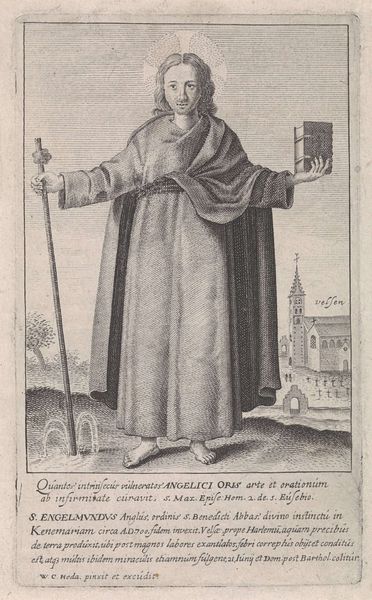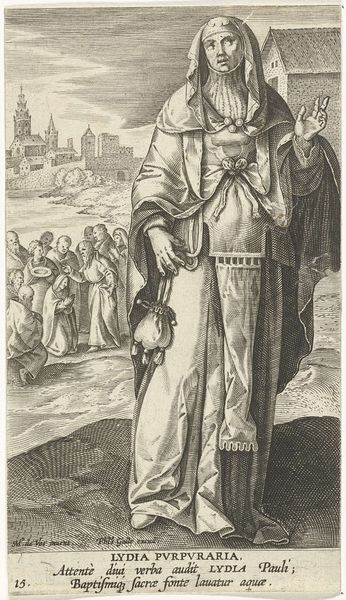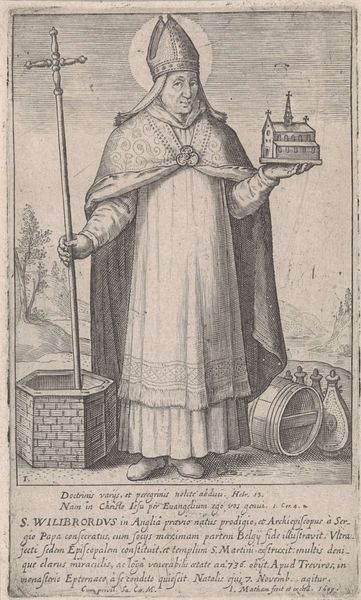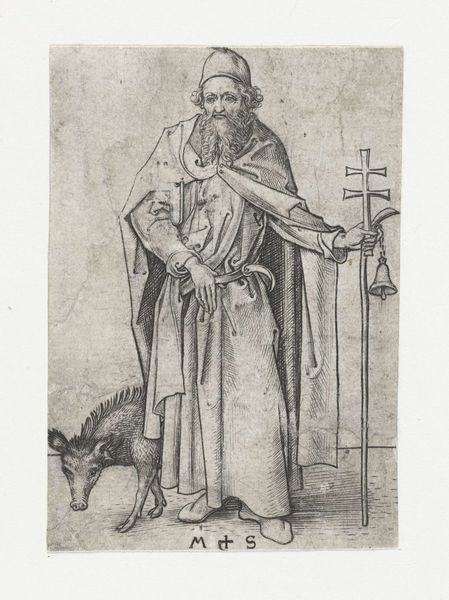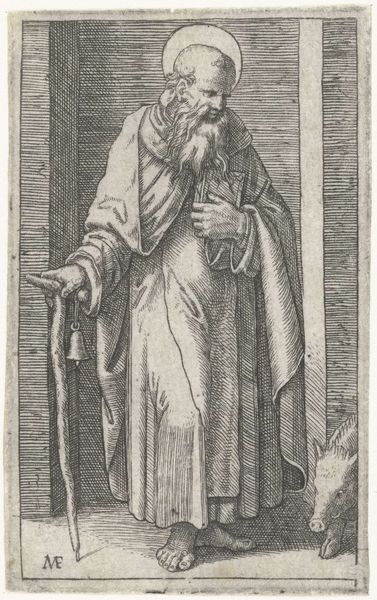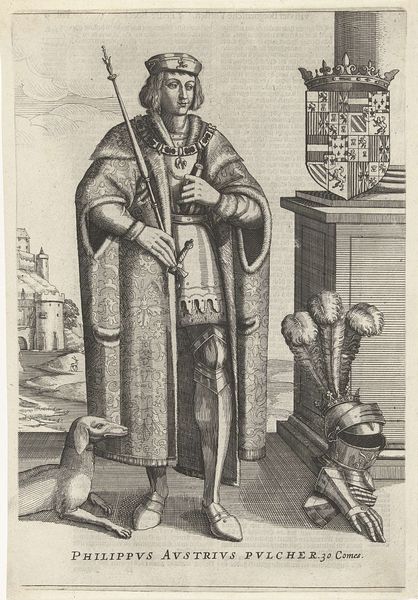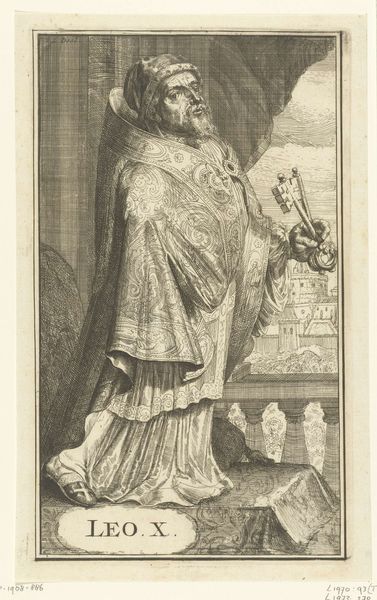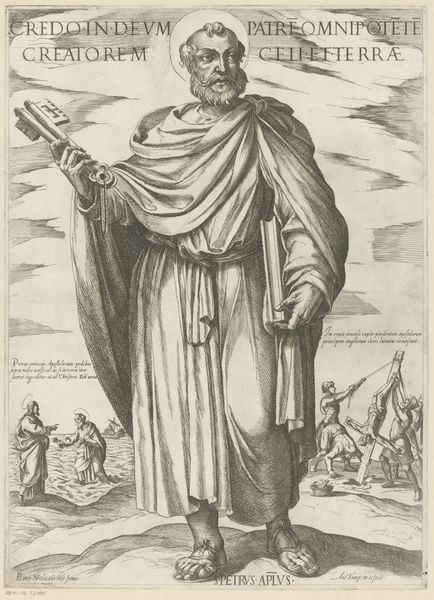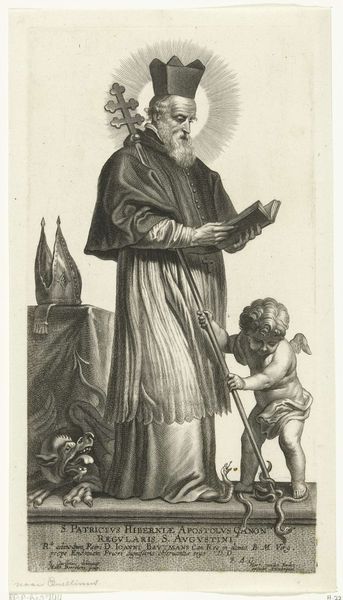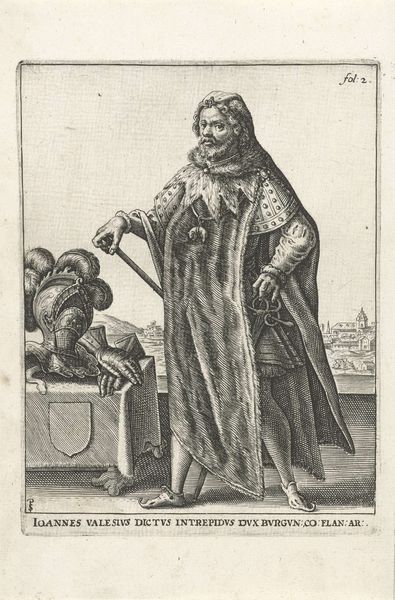
print, ink, pen, engraving
#
portrait
#
baroque
# print
#
ink
#
pen
#
portrait drawing
#
history-painting
#
engraving
Dimensions: height 259 mm, width 136 mm
Copyright: Rijks Museum: Open Domain
Curator: Let's consider this intriguing print titled "H. Augustinus," an engraving created between 1619 and 1672 by Theodor van (II) Merlen. The medium of ink, pen, and engraving lend a crispness to its Baroque style. What catches your eye first? Editor: The burning heart. It leaps out—a small but powerful symbol held aloft by a serene figure surrounded by potent religious iconography, giving a sense of pious zeal and devotion. Curator: Exactly. St. Augustine, our central figure, lived during a crucial period for the development of Christian thought. Note how van Merlen situates Augustine amidst the visual trappings of ecclesiastical power and learning: the miter resting on the table, the halo, even the adoring angel. This engraving serves not only as a portrait, but also as an assertion of Augustine's importance. Editor: Absolutely, and that staging makes the artwork inherently political. Think about the commissioning context: who sought to propagate this image of St. Augustine? What theological perspectives were at play when constructing and then disseminating such a portrait? I’m very interested in the institutional framework allowing this to circulate in the first place. Curator: I think that's insightful, situating the work's politics within the church. And looking at Augustine himself, you see a man mediating between the earthly and divine. The light radiating from the heart seems to almost engulf him; he's a vessel, transformed by divine inspiration. You could even read it as a representation of the gendered dynamics inherent within religious and political structures—specifically who wields influence versus who embodies received knowledge or inspiration. Editor: Yes, and that also relates to the cherubic figure on the right holding Augustine's scepter. Is it just holding it, or does it seem burdened, maybe even dwarfed, by the symbol of power and the implied weight of history that comes with it? That interaction is something that could use greater exploration! Curator: A fascinating interpretation. This piece certainly compels us to think more deeply about the individual within the institution. Editor: Indeed. It reminds us to analyze historical portraits through the lenses of faith, power, and enduring social structures.
Comments
No comments
Be the first to comment and join the conversation on the ultimate creative platform.

